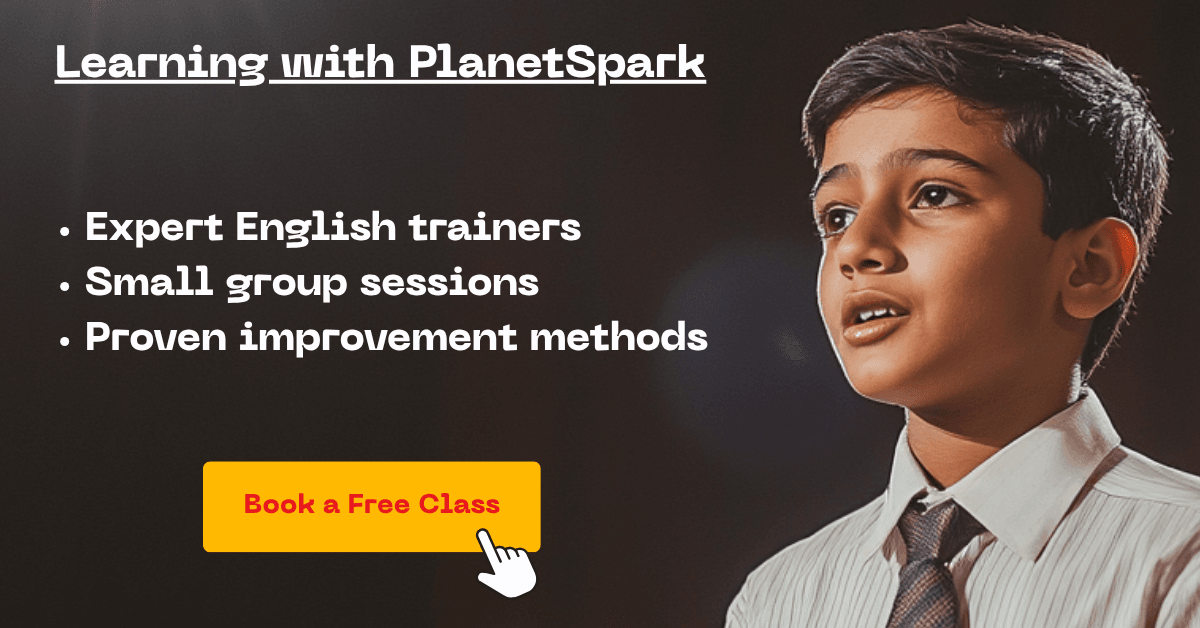Clauses and Sentence Structure: Master Fluent Writing

When learners search for “clauses,” they usually expect lists of definitions and types, but rarely do they explore how clauses actually shape the architecture of sentences and the rhythm of expression. Every fluent sentence you speak or write, whether in a conversation, story, or essay, owes its clarity to how its clauses are built and connected.
In this blog, we’ll go beyond memorizing definitions. We’ll explore how clauses interact to form strong sentence structures, how the arrangement of clauses can alter meaning or emotion, and how mastering this balance helps you communicate with impact. You’ll learn not only to recognize clauses but to use them consciously to write and speak with fluency and sophistication.

Clauses: The Engine of Every Sentence
At their core, clauses are not just grammar units; they are thought units. Each clause carries one heartbeat of meaning, one pulse of thought. Whether it’s a short statement like “She smiled” or a layered one like “She smiled when she remembered the song,” every clause captures a snapshot of the mind in motion.
Understanding clauses this way helps you move beyond grammar worksheets to seeing English as an evolving system of ideas where structure serves meaning.
When clauses are placed thoughtfully, they create a sentence that flows smoothly, balances emotion and information, and keeps the listener engaged. But when clauses are poorly structured, too long, too tangled, or too fragmented, they confuse readers and weaken your message.
How Clauses Shape Sentence Structure
Sentence structure depends on how clauses are arranged and connected. Think of a clause as a building block and a sentence as a design. The design changes when you rearrange or combine those blocks.
For example:
She read quietly. (Simple, focused)
While the storm raged outside, she read quietly by the lamp. (Complex, atmospheric)
She read quietly, and the world outside disappeared. (Balanced and reflective)
Each sentence conveys the same core action reading, but the clause structure alters tone and rhythm. This is what makes English such a flexible, expressive language.
Clauses can stretch a simple moment into a vivid scene, compress several actions into one smooth sentence, or emphasize emotion through pause and rhythm. That’s why mastering clause structure isn’t just about correctness; it’s about control.
Join PlanetSpark’s live English grammar courses to build confidence, fluency, and sentence control through real-life practice.
Clause Placement and Emphasis: The Hidden Skill
In English, where you place a clause in a sentence can subtly change its focus or emotional tone. Native speakers often use this intuitively, but for learners, it’s a superpower worth mastering.
Compare:
Because she was nervous, she forgot her lines.
She forgot her lines because she was nervous.
Both are grammatically correct. But the first emphasizes nervousness (the cause), while the second emphasizes forgetting (the effect). The position of the dependent clause changes the emotional focus of the sentence.
Similarly, starting with a dependent clause can create suspense or flow, while ending with one adds resolution. This rhythm is what makes writing or speech sound natural, emotional, and persuasive.
Clauses and Sentence Flow
Fluent English writing depends heavily on sentence rhythm, which comes from how clauses vary in length and connection. Too many short independent clauses can make your writing sound robotic; too many long dependent ones can make it heavy.
Effective writers mix short, punchy clauses with long, reflective ones to create contrast and pace:
He waited. She didn’t come. The night stretched on, silent and wide.
Versus:
He waited, wondering if she would come, the night stretching on in silence.
Both versions are beautiful, but the second feels more fluid, thanks to the clause connection. The secret to rhythm lies in how you combine independent and dependent clauses to guide the reader’s breath and attention.
Join PlanetSpark’s advanced grammar and writing classes today!
Learn how to make your sentences flow beautifully and confidently. Only a few seats left enroll now!
1. Complex Sentences: Connecting Ideas Seamlessly
A complex sentence combines an independent clause (a complete thought) with one or more dependent clauses (incomplete thoughts that add detail). This structure allows writers to express nuanced ideas without creating choppy or disjointed sentences.
Example:
Simple: I stayed home. It rained heavily.
Complex: I stayed home because it rained heavily.
Here, “because it rained heavily” is a dependent clause giving the reason for staying home. Using complex sentences effectively allows for smooth transitions and richer storytelling.
Tip: Use subordinating conjunctions like because, although, since, if, when, and unless to link clauses.
Short Description: Complex sentences connect independent and dependent clauses for fluid, detailed writing.
2. Relative Clauses: Adding Essential Information
Relative clauses describe nouns and often begin with who, whom, whose, which, or that. They can be defining (essential to the meaning of the sentence) or non-defining (extra information).
Defining Relative Clause:
The book that you lent me was fascinating. (Specifies which book.)Non-defining Relative Clause:
My brother, who lives in Delhi, is visiting us next week. (Extra info, can be removed without changing core meaning.)
Relative clauses enhance clarity and precision, especially in academic writing and detailed storytelling.
Short Description: Relative clauses enrich sentences by providing essential or extra details about nouns.
3. Adverbial Clauses: Explaining When, Where, Why, and How
Adverbial clauses act like adverbs; they modify verbs, adjectives, or other adverbs. They answer questions like when, where, why, how, under what condition, or to what extent.
Examples:
Time: I will call you when I arrive.
Reason: She smiled because she was happy.
Condition: You will pass the test if you study hard.
These clauses are powerful for creating dynamic sentences and showing cause-and-effect relationships.
Short Description: Adverbial clauses modify actions, explaining time, reason, condition, or manner.

4. Sentence Variety: Avoiding Monotony
Relying solely on simple sentences can make writing sound repetitive. Combining simple, compound, and complex sentences adds rhythm and variety.
Simple: She reads every day.
Compound: She reads every day, and she writes in her journal.
Complex: She reads every day because it helps her relax after work.
Pro Tip: Mix sentence types based on the emphasis or tone you want. For example, use a short, punchy sentence for drama, and longer, complex sentences for explanations.
Short Description: Sentence variety keeps writing engaging, clear, and expressive.
5. Common Mistakes in Clause Usage
Comma Splice: Using a comma to join two independent clauses without a conjunction.
Wrong: I went to the park, and it was raining.
Correct: I went to the park, and it was raining.
Fragmented Clauses: Treating a dependent clause as a complete sentence.
Wrong: Because it was raining. I stayed home.
Correct: Because it was raining, I stayed home.
Misplaced Modifiers: Placing clauses far from the word they describe.
Wrong: She almost drove her kids to school every day.
Correct: She drove her kids to school almost every day.
Short Description: Avoid comma splices, fragments, and misplaced modifiers for grammatical precision.
6. How to Practice Clauses Effectively
Identify clauses in your reading material. Break down complex sentences.
Rewrite simple sentences into compound or complex sentences.
Practice using relative and adverbial clauses in daily writing.
Edit your writing specifically for sentence variety and smooth transitions.
Short Description: Regular practice of identifying, rewriting, and editing clauses improves clarity and style.
Unlock the full potential of your writing by learning advanced clause usage.
Enroll now and make your sentences stronger and more engaging!
Conditional Clauses: Expressing Possibilities
Conditional clauses, often called “if-clauses,” describe situations and their potential outcomes. They allow writers to express possibilities, probabilities, or hypothetical scenarios with precision.
Types of Conditional Clauses:
Zero Conditional (general truths):
If you heat water to 100°C, it boils.First Conditional (realistic future possibilities):
If it rains tomorrow, we will cancel the picnic.Second Conditional (unreal present/future):
If I had a million rupees, I would travel the world.Third Conditional (unreal past):
If she had studied harder, she would have passed the exam.
Conditional clauses are valuable for expressing cause-and-effect, speculation, and hypothetical reasoning in both academic and professional writing.
Parallelism: Achieving Balance and Clarity
Parallelism involves maintaining consistent grammatical structure in phrases, lists, or comparisons. This technique enhances clarity, rhythm, and readability.
Examples:
Incorrect: She likes reading, writing, and jogging.
Correct: She likes reading, writing, and jogging.
Parallel structures are especially effective in formal writing, speeches, and persuasive texts, making ideas easier to follow and more impactful.

Advanced mastery of conditional clauses, parallelism, and sentence structure allows your writing to be precise, elegant, and professional. By avoiding common errors and practicing these techniques, you can express complex ideas with clarity, making your writing stand out in both academic and professional contexts.
Why Choose PlanetSpark?
At PlanetSpark, we believe grammar should be engaging, practical, and fun—not about rote memorization. Our Interactive Grammar Learning approach teaches kids through stories, dialogues, role plays, and live error correction, ensuring every concept is absorbed naturally.
Key Features
1. Concept-to-Application Model
Each lesson moves from rule explanation → examples → sentence formation → paragraph writing, → live correction, helping students apply knowledge immediately.
2. Gamified Learning Tools
Kids stay motivated through quizzes, word puzzles, Kahoots, and online games, making grammar practice exciting and memorable.
3. Integrated Writing Practice
Every grammar concept is reinforced with sentence-building and writing tasks, ensuring kids can use what they learn in real contexts.
4. Structured Grammar Proficiency Levels
Students progress from basic topics like nouns and verbs to advanced structures like conditionals, active/passive voice, and reported speech, with milestones to track growth.
5. Parent Reports on Progress
Parents receive detailed reports showing improvement in writing fluency, sentence complexity, and grammatical accuracy, giving transparency into each child’s development.
Take your writing skills to the next level! Apply these advanced clauses today, refine your sentences, and communicate ideas with confidence.
Frequently Asked Questions
A clause is a group of words containing a subject and a predicate; it can be independent or dependent.
They combine independent and dependent clauses to express nuanced ideas and connect thoughts smoothly.
Relative clauses describe nouns, while adverbial clauses modify verbs, adjectives, or adverbs.
Use the correct type—zero, first, second, or third to convey reality, possibility, or hypothetical scenarios.
Parallel structures maintain consistency, clarity, and rhythm, making sentences easier to read.
Personalized Communication Report
Record a video to get a AI generated personalized communication report for your child

Hi There, want to try these
tips for your child with
LIVE with our expert coach?
Let's check your child's
English fluency
